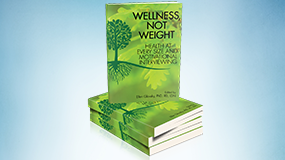
While I really don’t like the name “non-diet” (it’s negative), it tells the story clearly. We are not “dieting”, which implies restriction, and that some outside authority tells you when, what, and how much to eat. Whether you are doing this for weight loss or other reasons, it’s still restrictive. There is some evidence that restriction can actually cause bingeing. I’m guessing that if you have tried to diet, you’ve had the experience of becoming obsessed with food. I certainly have! It’s normal; the body interprets a lower intake of energy (calories) a starvation, and will work hard to find food to keep from starving to death.
This non-diet idea centers on three basic questions when you are thinking about eating.
1) Am I hungry, really physically hungry?
2) If I’m hungry, what do I really want to eat right now?
3) How much of this food do I need to feel satisfied?
I’m going to focus on Question #2, what do I really want to eat? It sounds like a simple question, but it’s always surprising to me that people either don’t know what they want, or are so used to “the rules” that tell them what they should eat that they are out of practice in knowing the answer.
The first thing to consider is whether or not you are hungry. Food tastes best when you are hungry! If you don’t know that, check it out next time you eat. So, it’s easiest to answer the question of what you want when you are physically hungry. That’s question (1). If you are hungry, the next question is, “What do I really want to eat?” This question centers on what food would feel satisfying, really good right now in your body. If you’ve been dieting for a while, this question can be really hard to answer. One way to begin to explore the idea of knowing what you really want to eat is to think of these four characteristics of food. The food you choose should be as close to perfect as possible in flavor, texture, color and temperature. The table below offers some ideas of foods that fall into each category. If a hamburger and fries are what you really want, and you choose a green salad with chicken (to save calories), it probably won’t be satisfying and might make it more likely that you will overeat or binge at the next opportunity. These two meals are not the same at all in the characteristics of food noted.
One way to think about what you really want to eat is “what hums for you?” When we hum, our voice and even chest vibrates. What are you “vibrating” for, or humming for? What food do you want from deep inside you? The idea here is that when we eat what we really want, that hum, or craving disappears. We have satisfied that urge.
Often I hear in response “But that can’t be possible! If I ate what I really wanted I’d eat junk food all the time and that’s not healthy. I’d be as big as a house, too!” What that means is that you can’t trust yourself to stop eating if it’s something you really want. Well, that turns out not to be true. It’s the dieting mentality that tells us “You can’t possibly trust yourself. Look where trusting yourself got you. Do it my way and you’ll be all set.” Sounds good, but we know that dieting almost never works over time. In practice, research has shown that people actually eat less and binge less when they learn to tune into their own hunger and fullness signals. And, about that idea that, left to your own devices, you would eat “badly”? That turns out not to be true, either. Once all foods are possible, most people select the best choices for their own situation.
The central concept here is that when we eat when we are hungry and eat what we really crave or hum for, we are more likely to be satisfied and ultimately need less food. This goes back to the basic HAES concepts described earlier in this article. These emphasize internal signals of when, what and how much to eat, a focus on moving one’s body in ways that feel good and leave you feeling strong, and little to no focus on body weight.
How Do I Know What I Want To Eat?
Characteristics of Food
| Examples | ||
| Flavor |
|
Candy, cake, cookies, pastry, soda, ice cream, fruit |
|
Fruit, fruit drinks, fruit flavored desserts such as sorbet | |
|
Sourballs, foods with hot chili peppers, foods seasoned with vinegar, horseradish or wasabi, pickles | |
|
Salty snacks like chips, pretzels, popcorn, soups, luncheon meats, pickles, olives, | |
|
Sweet and sour sauce, meats or poultry served with fruit, BBQ potato chips, popcorn eaten with candy | |
| Texture |
|
Ice cream, pudding, mashed potato, cheese, pasta |
|
Fried foods, vegetables, popcorn, chips, nuts, cookies | |
|
Meats, poultry, shellfish, some mushrooms | |
|
Cake, brownies | |
| Color |
|
Mashed potato, vanilla ice cream, macaroni and cheese
Tossed salad, fruit salad, vegetables |
| Temperature |
|
Cooked foods served hot, hot beverages
Frozen desserts, chilled foods served cold, chilled drinks |



